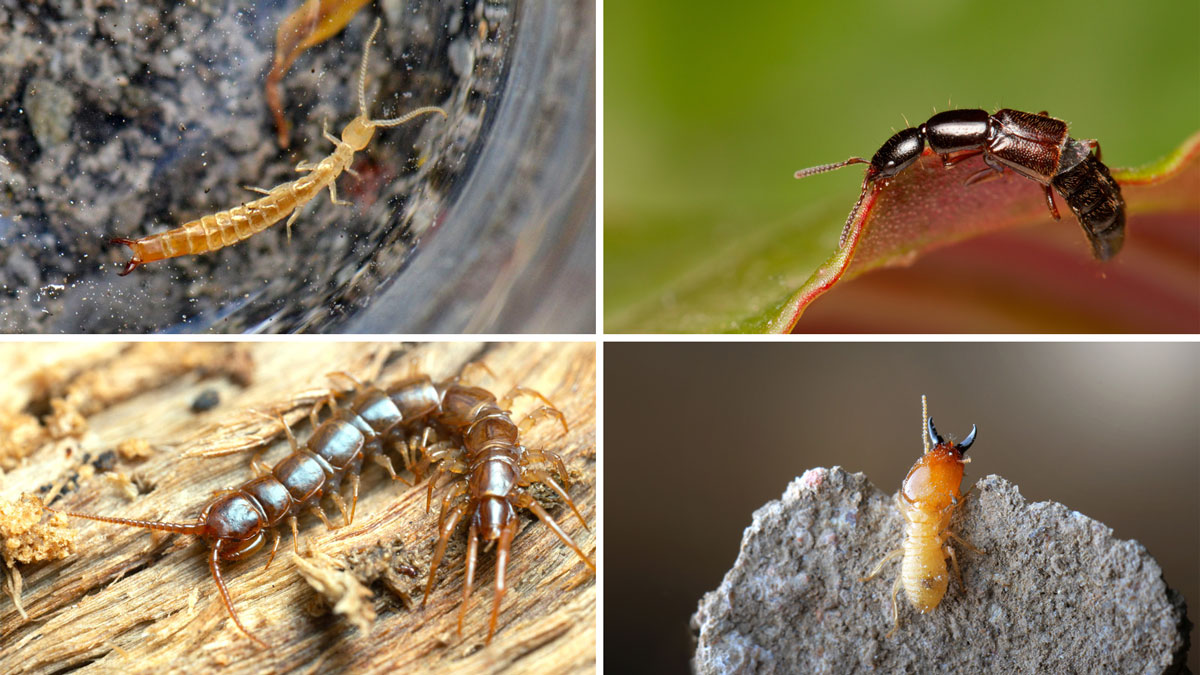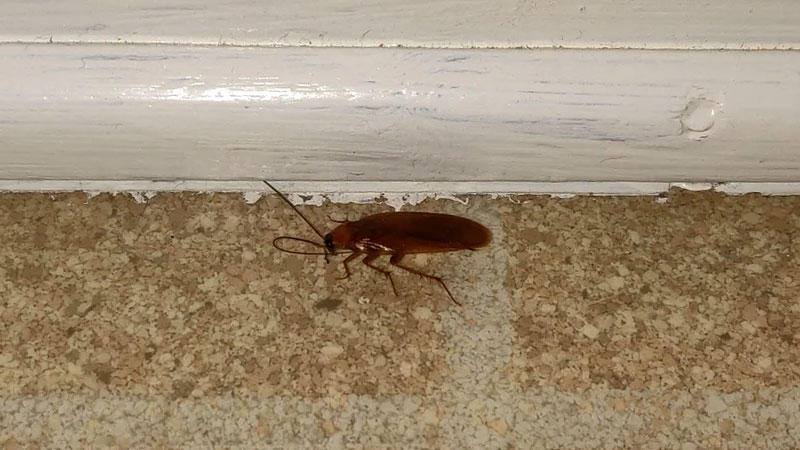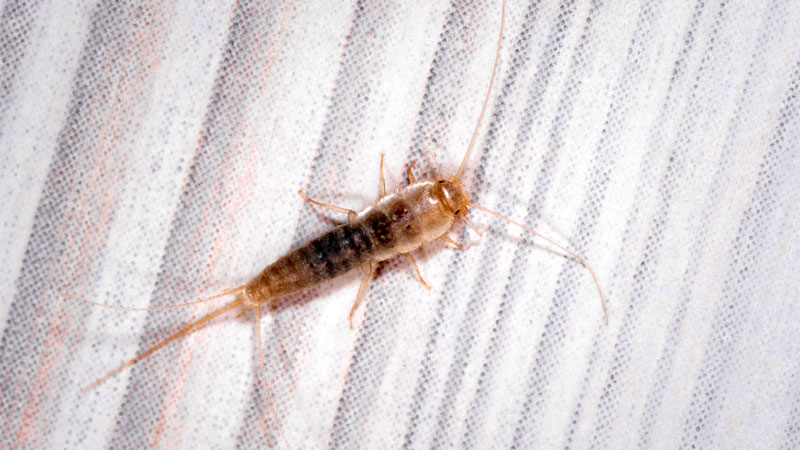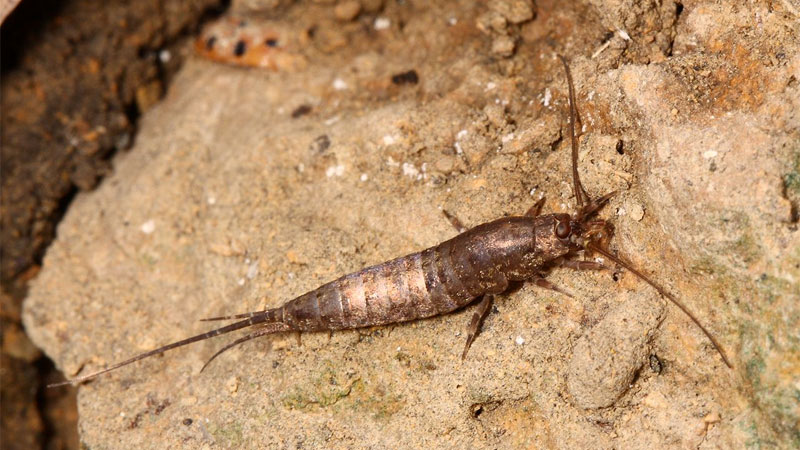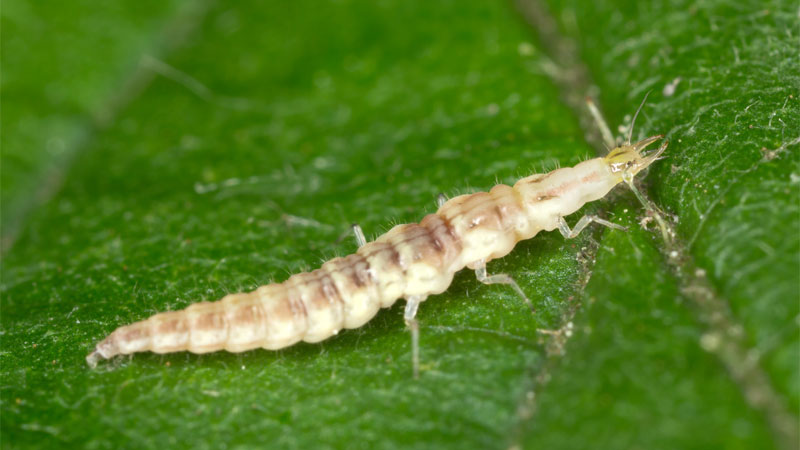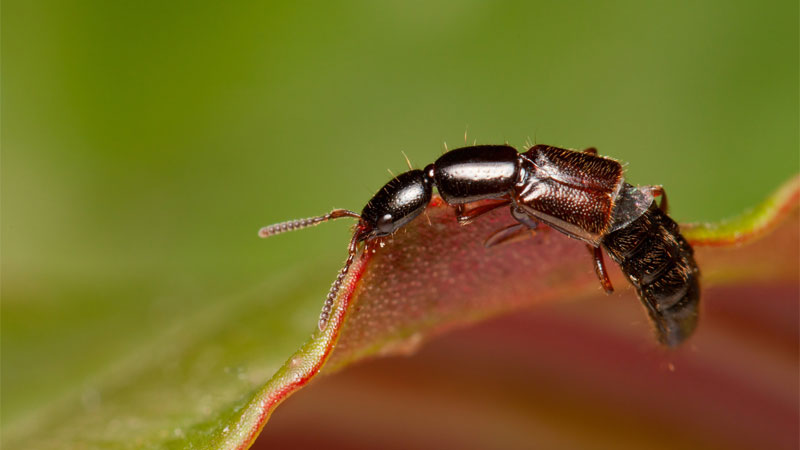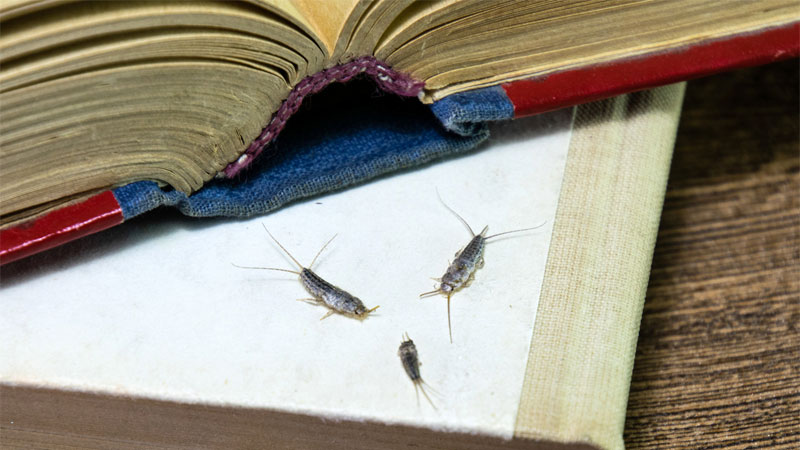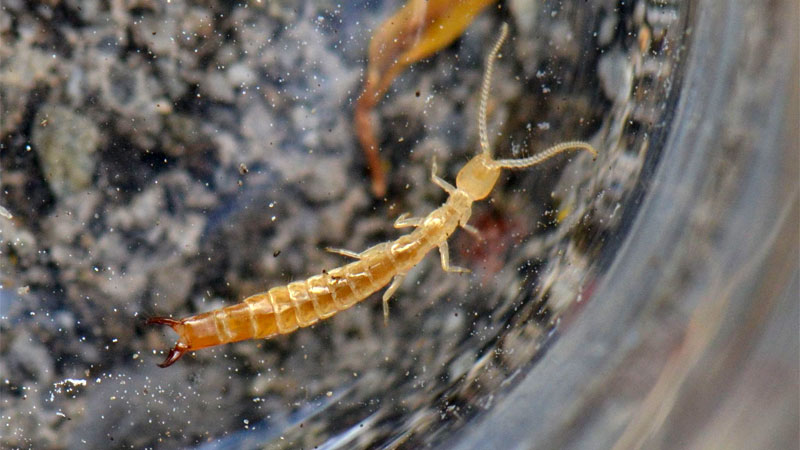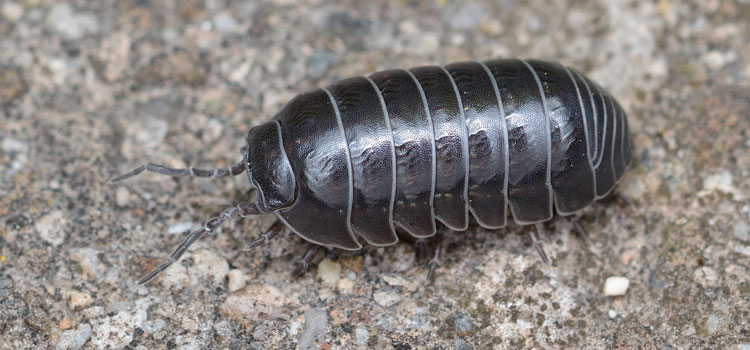One of the more curious things we tend to encounter in the pest control world is just how often critters suffer from a case of mistaken identity. This can lead to homeowners buying the wrong products or paying an exterminator for a problem they could’ve taken care of themselves.
This is especially true when mistaking bugs that look like sesame seeds for fleas or bed bugs.
You might think it’s hard to mistake other critters for earwigs, but there are a number of pests that may just appear to be one if you only catch a quick glimpse of them.
But first, here’s what an earwig looks like:
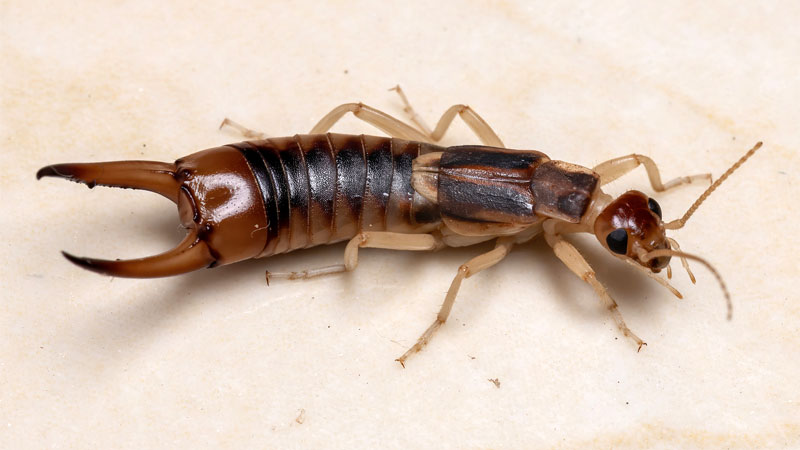
Bugs That Look Like Earwigs
Here are 11 pests that tend to look nothing like an earwig but can still be mistaken for one.
Related: 9 Termite Look-Alikes to Watch Out For
#1 – Centipedes
When you see the front or back of a centipede out of the corner of your eye, it can be easy to mistake it for an earwig. These critters mainly live outside but are known to wander indoors in search of food or infest damp areas where their prey tends to live.
They’re not harmful to humans and actively hunt spiders and a number of insect pests.
One of the things that can make people mistake the two is the rear end. Both critters have a pair of cerci, but the ones on a centipede are long and thin, while those on the earwig form pincers.
Of course, the long, thin bodies of centipedes with their numerous legs look very different from the short, oval bodies of earwigs when you compare them side-by-side.
#2 – Cockroaches
When you think of cockroaches, you’re probably thinking of one of the bigger species, such as the American cockroach. However, there are a lot of much smaller species, such as the 12 species of wood roach.
Wood roaches have small, oval bodies, making them common bugs that look like earwigs without pincers. Both are known to prefer the outdoors, but if a wood roach ventures inside, they’ll rarely stay for long. In fact, most roach species hate being indoors and tend to only wander in by accident or in an attempt to escape bad weather.
Another thing to keep in mind is that earwigs prefer plant matter, but roaches have a far more varied diet. Depending on the species, roaches can also spread a number of diseases and even parasites, while earwigs are relatively harmless. This last distinction is a good reason to try and get a positive identification on the critter as soon as possible.
#3 – Firebrats
The firebrat is an earwig-looking bug that’s also similar to silverfish. While earwigs are beetles, the firebrat is related to crickets and (of course) silverfish. Firebrats are notorious for munching on paper products and textiles, from carpets to wallpaper and upholstery. They also have a habit of leaving their frass everywhere.
The biggest visual difference between the two can be hard to spot. The cerci of earwigs are commonly referred to as pincers because of the way they can be used to grasp. However, the cerci of firebrats are longer and straight, much like those of a common cricket. Of course, an earwig is also less likely to be munching away on your linens.
#4 – Jumping Bristletails
These relatives of earwigs have earned their name because they tend to hop around. It can be difficult to tell the two apart because they have similar bodies and diets. However, neither are dangerous and jumping bristletails tend to be a bit smaller than earwigs.
One key difference is their rear ends. Where the earwig has a pair of pincer-like cerci, the jumping bristletail has straight cerci with an epiproct between them.
#5 – Green Lacewing Larvae
Lacewings are a beneficial critter in the garden, as they hunt many of the most common garden pests, such as aphids and mealybugs. The adults have elongated bodies, long antennae, and have easily visible wings.
But their larvae can often be mistaken for an earwig without pincers. This is especially true of the green lacewing (Chrysoperla carnea).
These larvae have pincer-like mouthparts that can be mistaken for an earwig’s pincers. However, the antennae will soon give them away, as they’re on the same end as the pincers, unlike with earwigs. Also, the antennae are straight, while earwigs have a joint in theirs.
These larvae are harmless and won’t bite or pinch if threatened. However, if you take a moment to observe them, you’ll find them actively hunting for prey, while earwigs take life a little more lazily and scavenge their food.
#6 – Rove Beetles
While they might vary a lot from one species to another, the rove beetle family tend to share a very similar appearance to earwigs in terms of size and shape. These beetles are generally harmless, although they can do a lot of damage to your plants.
The lack of cerci can be a dead giveaway that these critters aren’t earwigs. They also tend to be larger in size and less likely to be attracted to light compared to earwigs.
#7 – Scorpions
Suddenly finding these critters might rock you like a hurricane, but that’s not to say you can’t still mistake the presence of a scorpion for an earwig.
While not overly dangerous to people, encounters with scorpions can be deadly for your pets. They’re known to wander into homes in search of prey and can find their way into your shoes or clothes pile.
When looking at a scorpion, it can be hard to imagine these two critters could ever be mistaken for one another. Scorpions are fairly large with two pincers on one end and a curved tail with a stinger on its end. However, a scorpion that recently hatched can be quite small, and this is where most of the confusion can happen.
#8 – Silverfish
More often the bane of restaurants than homes, the silverfish is one pest you certainly don’t want to encounter. These teardrop-shaped nasties get their name from the silvery coating on their exoskeletons. They love moisture and are notorious for contaminating food. If it has sugars or starches, they’ll munch on it.
Unfortunately, telling these two apart can be difficult, since there are several species of silverfish that can vary in appearance.
The common silverfish is the one you’re probably most familiar with. It has two cerci, which are a bit shorter than the pincer-like cerci of earwigs. Their bodies also tend to taper into that signature teardrop shape, while earwigs are more oval.
Finally, silverfish can be quick and will scurry away from light while earwigs tend to be slower.
#9 – Termites
While more commonly confused with carpenter ants, termites are also frequently confused for earwigs. One of the biggest giveaways that you have termites instead of earwigs is the fact that earwigs won’t burrow through your walls.
Termites also tend to be lighter in coloration. Unlike earwigs, termites can cause major structural damage to your home and often require a professional exterminator’s touch.
Thankfully, earwigs are far less destructive, and can usually be eliminated without much difficulty. Their pincers can latch onto you and they do have a nasty bite, both of which termites lack. However, when having to choose which one to deal with, earwigs will win out every time.
#10 – Two-Pronged Bristletail
This particular order of bristletails is known as Diplura, or “two-tails”. Indeed, the cerci of two-pronged bristletails are so long they often resemble a pair of tails. Of course, this is very different from the shorter, pincer-like cerci of earwigs.
These wingless hexapods share the same environment and diet as earwigs, with those species that have longer cerci being herbivores, while those with shorter cerci being omnivorous predators.
One interesting survival feature both share is the ability to shed cerci in order to escape. However, the two-pronged bristletail leads a largely subterranean life, so you’re not likely to spot them indoors or even in the garden.
Their presence (when spotted, that is) is generally considered a sign of soil quality, as they prefer moist, humus-rich soil, whereas the more common earwig can be found even when the soil quality is poor and will most often be found on the surface, usually hiding beneath leaf litter or rocks.
#11 – Woodlice
These tiny crustaceans have a lot in common with earwigs. You’ll often find them under rocks or other groundcovers, much like earwigs.
They lack wings and their bodies tend to be smaller than an earwig. Many have visible appendages that resemble an earwig’s cerci, but these are straight and sometimes very short. Perhaps the most famous example of woodlice are pill bugs, which are known to invade homes (although many other woodlice avoid the indoors).
Woodlice are pretty much harmless, although they can cause some harm to cultivated plants on occasion. Also, while they won’t damage your home, their presence is an indicator of a moisture problem. Thus, finding woodlice indoors can be more serious than spotting earwigs.
- How to Get Rid of Hawks - March 8, 2024
- How to Get Rid of Pill Bugs (Rolly Pollies) - March 1, 2024
- How to Get Rid of Groundhogs (Woodchucks) - February 5, 2024

